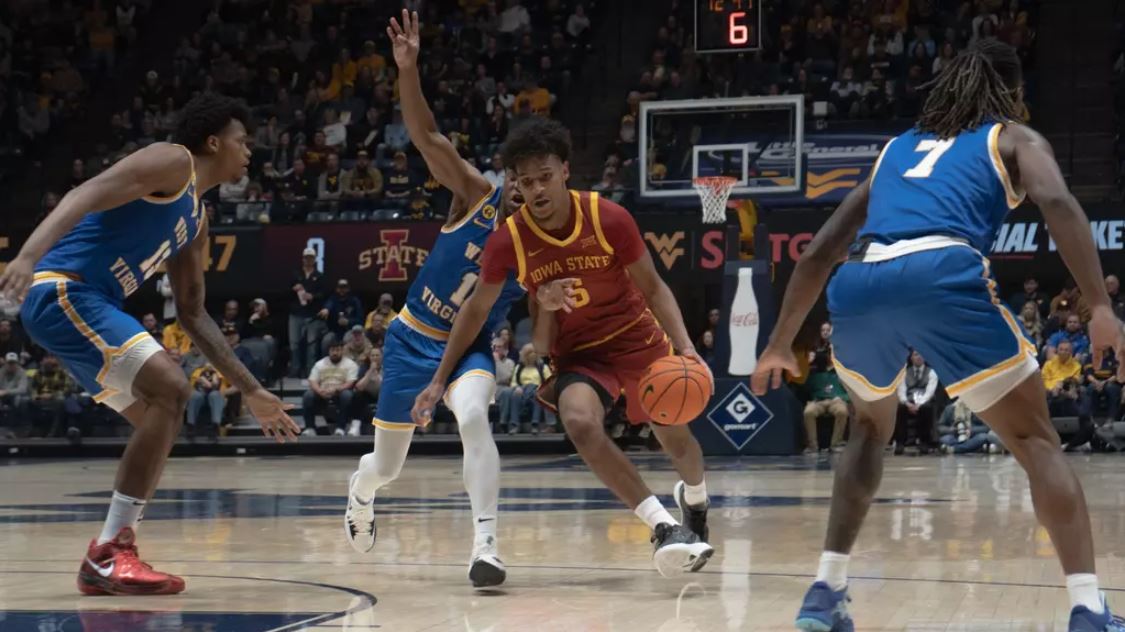Editorial: What they won’t tell you at orientation
June 1, 2017
Orientation began this week, when community groups grab booths at the Orientation Fair to try to dispense as much information at incoming students as possible in a very, very narrow time frame.
That information overload leads to dazed faces on students and parents alike. Don’t worry. Here’s the information you really need to become oriented with Iowa State.
Anything they told you is online.
That big, red binder? The printouts and worksheets and brochures and who knows what else? Most of it can be found, with minimal effort, on the Iowa State website (iastate.edu). Spend some time looking through different menus and using the search bar and student/staff directory.
Chances are, in a pinch, you’re not going to open that red binder. You’re going to hit the search engines for answers – so practice now.
This place is big…
Maybe you took a tour of campus. Hate to break it to you, you probably didn’t take a tour of campus. You took a tour of central campus – the inner loop. The campus then goes out in rings. Remember that MyState app? The Iowa State website also has a maps page. Look up your classes ahead of time.
If you’re panicking that your newly picked schedule doesn’t show locations for your classes, it usually shows up in early August. Double check the night before classes start to see if anything changed.
But it doesn’t feel too big.
Despite the actual size of campus, most people can [speed] walk from Friley to Kildee, two opposite corners, in twenty minutes. There’s also busses.
Beyond physical size, the only time you feel like 36,000 people are on campus is during tailgating (or tour days – or at 11 a.m. at the Hub). You’ll get into smaller and smaller classes and that most majors and departments are a smaller size.
You’ll find a niche of people in your classes, clubs or living area.
Campus is welcoming – if you make the first move.
There are organizations on campus to help with making campus welcoming – student affairs, International Students and Scholars, the multicultural office, women’s center, various alliances, clubs and organizations, the LGBT Student Services Center and plenty more.
But you have to make the first move. Talk to the people next to you in class, across the hall in your dorm, or visit a club meeting of an organization that interests you.
And then make the choice to be welcoming back.
Ditch the red backpack.
The red knapsack is the easiest way to segregate out new students – which is great for tour leaders and other group-herders. But on campus, a red knapsack means you are possibly very lost and in need of assistance. If you don’t want the fact you’re new to be obvious, don’t keep the knapsack.
(The one exception is near State Gym. They make really great gym bags.)
You CAN eat the food here.
Campus Dining Services has trained chefs. The food isn’t the same as where you’ve gone to school previously – it doesn’t face the same restrictions from the state, and a lot of it is made or grown locally. Where students go wrong is forgetting that the food is prepared – not the meal. You still have to put your meal together from all those options, and usually picking your favorites in mass quantity leads to burnout.
Think of it like any restaurant: you pick a drink, an entreé and up to three sides. Even in a buffet. Ultimately, remember that just because you can have mashed potatoes, meatloaf, mac and cheese and waffles all in one meal doesn’t mean you should.
They’re serious about AccessPlus and the MyState App.
Nine times out of ten, AccessPlus has anything you need in terms of any kind of paperwork. Parking, meal plans, housing, tax forms, class schedules — there’s a ton in that little guy. Become comfortable with it.
And download the MyState App. It’s your key to the next bus, open dining halls and has a map of all the buildings on campus.
Don’t even try to drive.
The parking police are serious here and the signs that tell you where to park can be seriously confusing. Some lots are completely closed off to students, some are open after 5 p.m. and some are free. The easiest way to not get a ticket is to not bring your car on campus whenever it’s possible. Just because the building you have your 8 a.m. in has a parking lot right next to it, doesn’t mean you’re allowed to sleep in a few extra minutes and drive.
Unless you’re interesting in becoming a traffic ticket collector, walk, ride the bus or bike on campus. You can get a car later, when you have an internship off campus.
Also, students are not paying attention on campus when they have their headphones in and are frantically checking social media on their walks between classes. They don’t care if a car is coming, if they need to cross the road they will do so without looking up from their phones.
Another reason why it’s better to ditch your car during the day.
Follow the Iowa State Daily on Twitter @iowastatedaily or find us on Facebook to stay updated on the need-to-know on campus.






